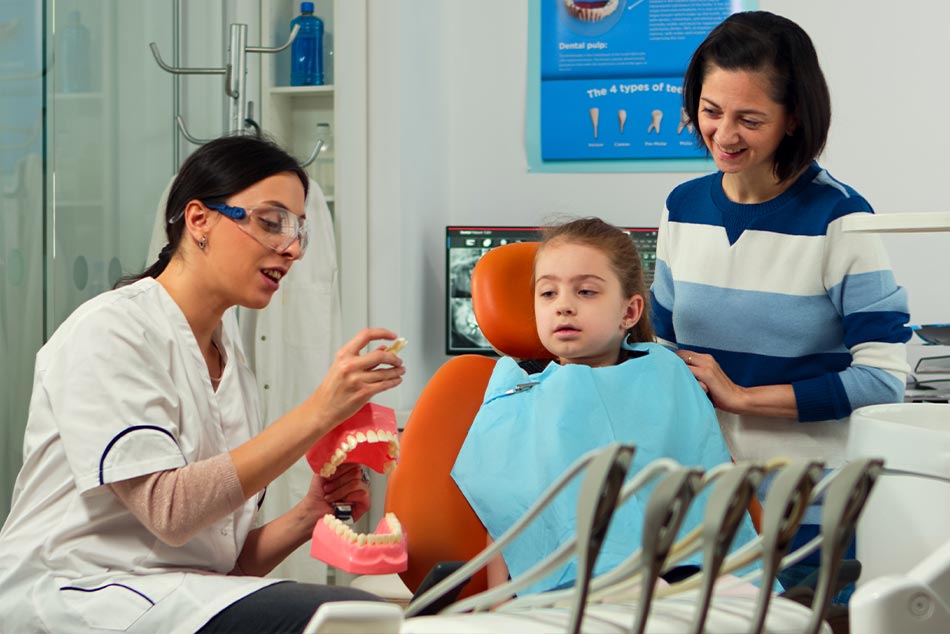Twelve to 24 months of age:
- Follow the schedule of dental examinations and cleanings, as recommended by your child’s pediatric dentist. Generally, dental examinations and cleanings are recommended every 6 months for children and adults.
- As your child learns to rinse his or her mouth, and as most deciduous (baby) teeth have erupted by this age, brushing with a pea-sized portion of fluoridated toothpaste becomes appropriate.
Even babies can develop tooth decay if good feeding habits aren’t practiced. Putting a baby to sleep with a bottle might be convenient, but can harm the baby’s teeth. When the sugars from juice or milk remain on a baby’s teeth for hours, they can eat away at the enamel, creating a condition known as bottle mouth. Pocked, pitted, or discolored front teeth are signs of bottle mouth. Severe cases result in cavities and the need to pull all of the front teeth until the permanent ones grow in.
Parents and childcare providers should help young kids set specific times for drinking each day because sucking on a bottle throughout the day can be equally damaging to young teeth.
Dental research has resulted in better preventive techniques, including fillings and sealants that seep fluoride, but seeing a dentist is only part of good tooth care.
If you are prone to tooth decay or gum disease, your kids may be at higher risk as well. Therefore, sometimes even the most diligent brushing and flossing will not prevent a cavity. Be sure to call your dentist if your child complains of tooth pain, which could be a sign of a cavity that needs treatment
As kids grow older, their bite and the straightness of their teeth can become an issue. Dentists know that manipulation of teeth at a younger age can be easier and more effective in the long run. Younger children’s teeth can be positioned with relatively minor orthodontia, thus preventing major orthodontia later on.
Choosing the best toothpaste for children
When choosing a toothpaste for children one should consider avoiding harmful ingredients. Choose a mild abrasive, avoid choosing toothpastes which contain SLS (Sodium Lauryl Sulfate), use a small small, pea-sized amount of fluoridated toothpaste. Also, be sure to buy soft bristled toothbrush, encourage good eating habit and do regular pediatric dental visits.







